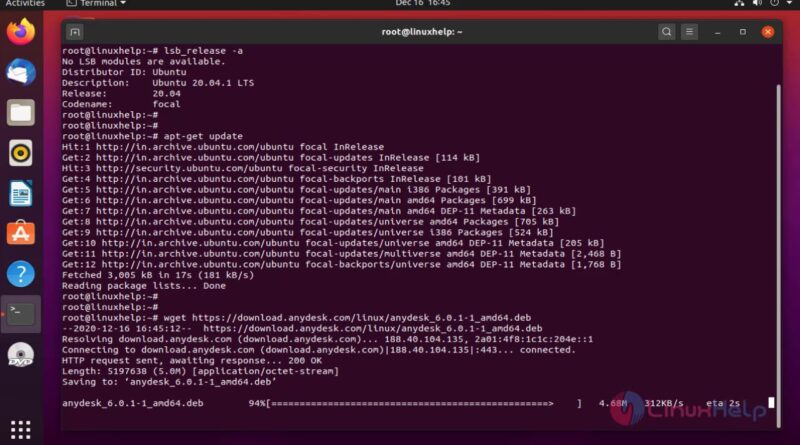

Thanks for using this tutorial for installing latest stable version of AnyDesk on Ubuntu 16.04 LTS (Xenial Xerus) system. This will set a fixed password on your system, Which can be used anytime to connect.Ĭongratulation’s! You have successfully installed AnyDesk. Now, You may need to set a password for unattended access. You will get an AnyDesk ID for connecting from remote systems using AnyDesk. Once installation, Launch the AnyDesk on your system. First make sure that all your system packages are up-to-date sudo apt-get updateįirst, you can download it from its official website and install on Ubuntu: # 32-Bit # I will show you through the step by step installation AnyDesk on a Ubuntu 16.04 (Xenial Xerus) server.

The installation is quite simple and assumes you are running in the root account, if not you may need to add ‘sudo’ to the commands to get root privileges. This article assumes you have at least basic knowledge of linux, know how to use the shell, and most importantly, you host your site on your own VPS. Anydesk provides the faster remote connection than any other existing remote desktop application. You can say it’s an alternative of the TeamViewer, which is available free.

Access all your programs, documents and files from anywhere, without having to entrust your data to a cloud service. Next, import the GPG key using the following command: curl -fsSL | gpg -dearmor | sudo tee /usr/share/keyrings/anydesk.AnyDesk is the world’s most comfortable remote desktop application. Now run the following command below to add AnyDesk to your Linux Mint system: echo 'deb all main' | sudo tee /etc/apt//anydesk.list Installing AnyDesk on Linux Mint 21.īy default, AnyDesk is not available on the Linux Mint 21 base repository. Sudo apt install software-properties-common apt-transport-https wget ca-certificates gnupg2 Before running the tutorial below, it’s important to make sure your system is up to date by running the following apt commands in the terminal: sudo apt update We recommend acting as a non-root sudo user, however, as you can harm your system if you’re not careful when acting as the root. A non-root sudo useror access to the root user.



 0 kommentar(er)
0 kommentar(er)
